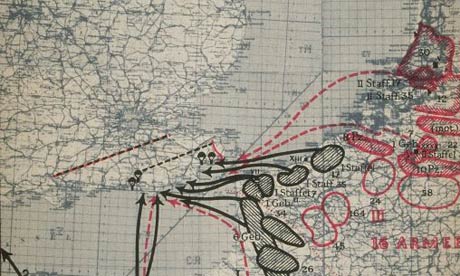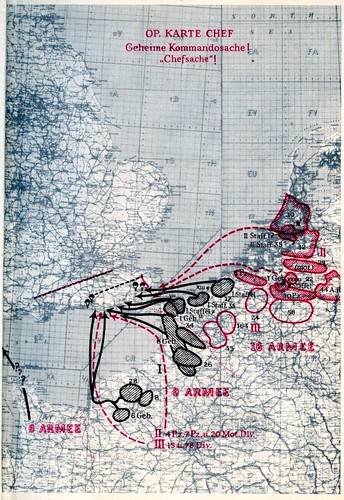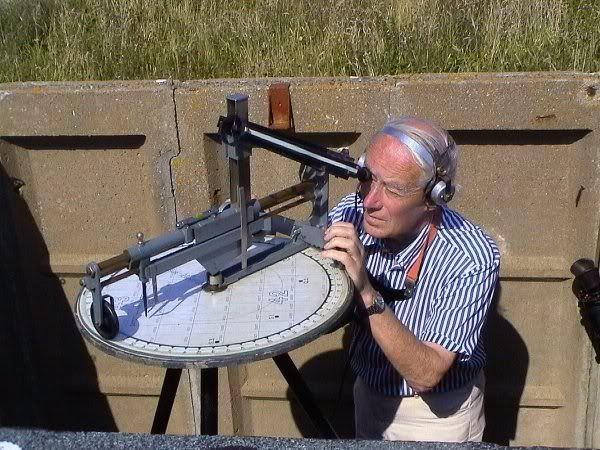...while this is true at the point of the FJ's porposed LZs - from the time they land and re-formate as much as possible they'll be heading west towards their objective - and that objective - Lympne...is only two and a half miles from the sealandings at Hythe.
Those two and a half miles will be the tough ones.
Not necessarily. Remember, the FJ plans included both infiltrating around Lympne AND a small drop on the "other" side of the RMC, the seaward side; the Germans intended to break that particular defensive line early on before starting to wrap up the
full length of the RMC
once 22nd Airlanding arrived at Lympne...and that subsidiary landing just south of the RMC brings the distance between FJ forces and the ampibious forces down to just over a mile...
The Bren was a standard issue weapon to every anti-tank gun section - for reasons that should surely be obvious? There are no other artillerymen in Milforce...
Yes, there were...
and an infantry battalion commanded by Lieutenant-Colonel Fraser and made up of the men from the two batteries of 5 Field Regiment and the two batteries of 7 Anti-Tank Regiment that were still without guns.
Hargest had policed up the unemployed gunners from ALL the NZ division's artillery elements to form the scratch battalion.
Milforce was not (just) limited in speed by the Matildas but by the fact that they were making a tactical move.
Yes, and I DID note that they wwere also slowed down by the density of
Milforce vehicles per mile that the orders mandated. But even given the density the forward move could have been faster IF not slowed by the Matildas. If those "10 v.t.m." had been lorries/buses/lights minus the Matildas, the mandated speed could have been higher...for the "10 v.t.m." would simply move faster along a
given stretch of road. Think of a bicycle chain - all the links are
the same length, a given number of links per foot - but the faster the chain goes round the same density of links per foot simply moves faster

And I am asking you again who, which organisation, you think will be receiving these 'hundreds of reports'?
The Police and LDV will be receiving reports from the civilians and deciding which to pass up the line; the LDV reports will go up the chain of LDV command to the point they're liaised across to XII Corps....OR as the case may be in each area they're to up up to Division BEFORE going up to Corps! In other words - LDV reports from a landing inside 2nd London's area will have to be reported to to Division...who will spend x-amount of time evaluating it before deciding to bin it or pass it on up to Corps.
Meanwhile Corps would be receiving the reports from the Army's own positions reporting drops that Divison have thought reliable enough to pass up to
them. At each "highest" point" in the Police/LDV reporting chains
before it goes over to the Army there'll be an element of discretion applied - "Old Jones is ALWAYS seeing paratroopers...", "Fred was down the Feathers' pissed last night..." etc.
The point is -
every decision level, no matter how minor, adds minutes into the time it takes for valid reports to move up the line to XII Corps...then THEY have to evaluate them and decide what direction to send 5th Brigade off in.
They are compass directions, not tactical instructions.
They give a starting location, and a location to approxiamtely end up, don't they? That's an instruction to begin at point A and end up at point B.
And there is no mention of 'sweep'.
Okay - how DO you find and fight light troops in unfavourable terrain with dozens of possible conflicting reports as to their location
several hours previously?
5th Brigade/Milforce are not only tasked with tackling landings by air. Secondly there are the local forces..
The local forces all had their "fire engines" designated and organised to immediately counter-attack parachute landings in their area.
Exactly.
In their area...and Lympne airfield was
just east of
but still outside 2nd London's "area".
Another lesson from Crete was not to land airborne forces directly on top of well defended objectives - something the FJ planners were unaware of in their September '40 planning.
Wrong and wrong.
First of all, before I go on - in 1940 noone knew the lessons of Crete!

BUT -
1/ The FJ were aware of the problems of landing airborne forces on top of well defended objectives - hadn't they got their noses bloodied in several places in Norway and Holland by even LIGHT defence??? How many airfields
did they end up controlling and using in Holland
before the Dutch surrender?

2/ the FJ were also quite well aware of this problem; remember this was EXACTLY the reason they'd been left OUT of the first version of Sealion exept for the blocking actions at Dover....
because their original style of dropping/landing directly on defended airfields didn't work!
You have quoted the wrong bit (hopefully ) the compass directions above are where the NZders will be attacking from.
Read the orders AGAIN...
(i) North and N.W. of DOVER south of the line SANDWICH (7776)-
WINGHAM (6875) from the direction of CANTERBURY
...
FROM Canterbury to the "North and N.W. of DOVER " means
they move
south-east from Canterbury
(ii) N.W. of FOLKESTONE from the direction of SELLINGE
TO the "N.W. of FOLKESTONE"
FROM Sellinge means
they move
east from Sellinge!
Milforce and 5th Brigade will, probably, therefore be much closer to where the second wave is dropping ..
Nope - they'll still be on the road heading there...

It depends on how quickly the Ju52s can be turned round and dispatched again...but if everything works in heir favour, they could be dropping the second wave while 5th Brigade/
Milforce are still well to the north-west of their LZs, with the first wave moving towards the second wave's LZs with only a few miles to cover.
My personal opinion has always been that the second wave will be in fact delayed AND have lost aircraft.
BUT I was doing some figuring out last night; whatever happens...even
IF there's absolutely NO delay
AT ALL 
between the very first report of FJ landings coming in and Corps making the correct evaluation and cutting final orders for 5th briage group -
it STILL takes them at least three and a half hours to reach Sellinge at the very minimum! Add in time for reliable reports to make their way to Corps and be evaluated
and final orders sent to Hargest on what area to actually counterattack
in...and embarkation time "east of Maidstone" and de-bussing
and formating time at the other end, the start line somewhere around Sellinge...you could be looking at four-four and a half-five hours - plenty of time to get the second FJ wave on the ground even with the
GERMANS suffering delays too!
Fair enough but the British have more mobile forces beyond NZ Div
Yes, but as I asked before - which ones ordered to clear/counterattack into those
same specific locations/areas?

No version of German planning that I've seen had landings near Dover. Lack of good beaches and the numerous batteries kiboshed that
Topmost black arrow certaintly puts them nearer Dover than Hythe! Bit obscured but it looks roughly like
east of Folkestone...


Twenty years ago we had Johnny Cash, Bob Hope and Steve Jobs. Now we have no Cash, no Hope and no Jobs....
Lord, please keep Kevin Bacon alive...



